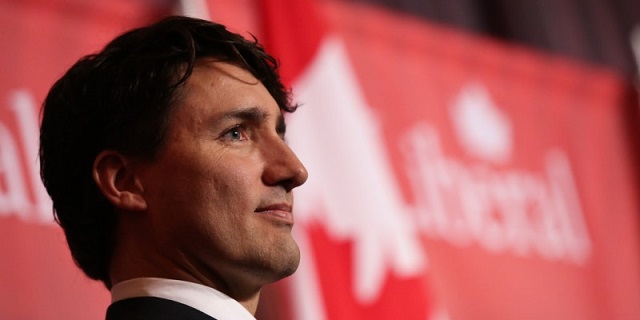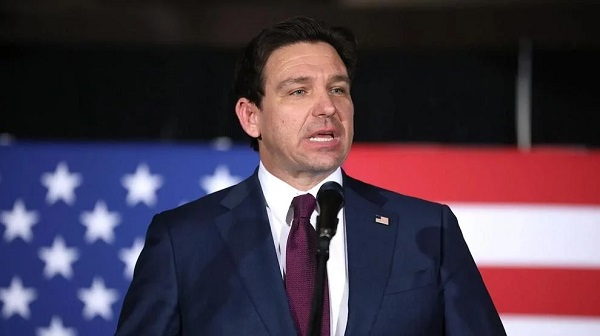Fraser Institute
Latest federal budget will continue trend of negative outcomes for Canadians

From the Fraser Institute
By Matthew Lau
From the third quarter of 2015 to the fourth quarter of 2023, growth in real GDP per-person (a common indicator of living standards) was less than 1 per cent cumulatively versus more than 15 per cent in the United States. This despite—or more accurately, because of—massive government spending including on corporate subsidies
Reading the federal budget, which the Trudeau government tabled last week, is not an activity likely to improve the equanimity of Canadians suffering from over-taxation and anxious about stagnating living standards. The fact is, the budget sets Canadians even further behind with increased costs and higher taxes, which are sure to reduce productivity and investment further.
In terms of taxes, the main headline is the increase to the capital gains tax to a two-thirds inclusion rate for amounts over $250,000 per year. With Canada’s business investment numbers already dismal, the capital gains tax hike makes things worse by discouraging entrepreneurship and distorting economic decisions to favour present day consumption instead of saving and investment. Indeed, because people know the money they earned today will be taxed more heavily when they invest it tomorrow, the capital gains tax hike reduces incentives to work and earn today.
When it comes to costs, the “total expenses” line in the fiscal tables is most instructive. In last year’s budget, the Trudeau government said it would spend $496.9 billion in 2023-24 and $513.5 billion in 2024-25, rising to $556.9 billion by 2027-28 for a total of $2.6 trillion over five years. But according to this year’s budget, its $505.1 billion for 2023-24, $537.6 billion in 2024-25 and $588.2 billion by 2027-28, for a total of $2.8 trillion over the same five-year period, with both higher program spending and greater borrowing costs contributing to the increase.
In other words, the Trudeau government overspent its budget last year by an estimated $8.2 billion, has increased its spending for this year by $24.1 billion, and will now overspend last year’s fiscal plan by a total of $120.8 billion over five years. And that’s assuming the Liberals stick to the spending plan they just tabled. The Trudeau government has a track record of blowing past its original spending targets, often by astonishing margins, a trend continued in its latest budget. So taxpayers might reasonably expect even the significantly increased costs presented in this latest budget are an understatement.
Canadians might find the exorbitant costs of federal spending easier to accept if they saw some benefits commensurate to the spending, but they have not. From the third quarter of 2015 to the fourth quarter of 2023, growth in real GDP per-person (a common indicator of living standards) was less than 1 per cent cumulatively versus more than 15 per cent in the United States. This despite—or more accurately, because of—massive government spending including on corporate subsidies and other initiatives the government claimed would boost economic growth. Clearly, such growth has not materialized.
The latest budget increased spending for the national child-care program, but the thing has been a disaster from coast to coast, with families unable to find spots, daycare operators in dire straits, and costs to taxpayers ballooning. Similarly, while health-care spending has risen over the years, access to medical care has gone down. Spending and regulation related to climate change have exploded under the Trudeau government, but the environmental benefits of initiatives such as electric vehicle consumer subsidies and plastic bans, if there are any environmental benefits at all, are nowhere near high enough to offset the burden to taxpayers and consumers.
Clearly, the Trudeau government’s ramp-up in spending and increased taxation, as the GDP and investment figures show, have produced severely negative outcomes for eight years. By ramping spending and taxation up yet higher, it will help continue these negative outcomes.
Author:
Business
Canada’s recent economic growth performance has been awful

From the Fraser Institute
By Ben Eisen and Milagros Palacios
Recently, Statistics Canada released a revision of its calculations of Canada’s gross domestic product (GDP) in recent years. GDP measures the total production in an economy in a given year, and per-person GDP is widely accepted by economists as one of the most useful metrics for assessing quality of life. The new estimate places Canada’s GDP for 2024 at 1.4 per cent larger than previously reported.
By the standards of these sorts of revisions—which are usually quite small—the recent update is significant. But make no mistake, the new numbers do not change the fundamental story of Canada’s economic performance, which has been one of historically weak growth and stagnant living standards for an unusually long stretch of time.
Let’s get into the numbers (all adjusted for inflation, in 2017 dollars) with some historical perspective. The new figures put Canada’s per-person GDP estimate for 2024 at $59,529. By comparison, in 2019 per-person GDP was slightly higher at $59,581. This means there has been no progress at all in Canadian living standards as measured by per-person GDP over the past five years. Even with the revision, five years of flat living standards is an extraordinary result.
This is historically anomalous. From 2000 to 2018—a period that was itself not especially strong by the standards of earlier decades—per-person GDP still grew at a compounded annual rate of just under one per cent. In the 1990s, growth was faster still at roughly 1.8 per cent annually. In both periods, living standards were rising meaningfully, even if the pace varied. The fact that they have completely stagnated for five years is alarming, even if our GDP numbers aren’t quite as bleak as we believed a few weeks ago.
Some pundits determined to view all economic data through a political lens have emphasized that under the new revisions, the overall rate of per-person growth during Justin Trudeau’s time as prime minister is now approximately the same as what occurred during Stephen Harper’s tenure.
However, this is more relevant as a political talking point than an economic insight. The historical data show that at an average annual growth rate of just 0.5 per cent, the Canadian economy’s performance under Harper was weak by long-term standards. This is something that Trudeau himself recognized when he first sought high office, criticizing the Harper government for “having the worst record on economic growth since R.B. Bennett in the depths of the Great Depression.”
Trudeau was right back then that Canadian economic growth during the Harper era was historically weak. As such, a revision showing that Canada’s slow growth has approximately continued for the past decade is hardly cause for celebration. It simply underscores that both governments presided over a long period of weak productivity growth and very slow improvements in living standards—and that in recent years even that sluggish growth has given way to complete stagnation.
Of course, an upward revision to recent GDP calculations is welcome news, but it must not be allowed to distract policymakers or the public from the reality of Canada’s severe long-term growth problem, which in recent years has gone from bad to worse.
Community
Charitable giving on the decline in Canada

From the Fraser Institute
By Jake Fuss and Grady Munro
There would have been 1.5 million more Canadians who donated to charity in 2023—and $755.5 million more in donations—had Canadians given to the same extent they did 10 years prior
According to recent polling, approximately one in five Canadians have skipped paying a bill over the past year so they can buy groceries. As families are increasingly hard-pressed to make ends meet, this undoubtedly means more and more people must seek out food banks, shelters and other charitable organizations to meet their basic necessities.
And each year, Canadians across the country donate their time and money to charities to help those in need—particularly around the holiday season. Yet at a time when the relatively high cost of living means these organizations need more resources, new data published by the Fraser Institute shows that the level of charitable giving in Canada is actually falling.
Specifically, over the last 10 years (2013 to 2023, the latest year of available data) the share of tax-filers who reported donating to charity fell from 21.9 per cent to 16.8 per cent. And while fewer Canadians are donating to charity, they’re also donating a smaller share of their income—during the same 10-year period, the share of aggregate income donated to charity fell from 0.55 per cent to 0.52 per cent.
To put this decline into perspective, consider this: there would have been 1.5 million more Canadians who donated to charity in 2023—and $755.5 million more in donations—had Canadians given to the same extent they did 10 years prior. Simply put, this long-standing decline in charitable giving in Canada ultimately limits the resources available for charities to help those in need.
On the bright side, despite the worrying long-term trends, the share of aggregate income donated to charity recently increased from 0.50 per cent in 2022 to 0.52 per cent in 2023. While this may seem like a marginal improvement, 0.02 per cent of aggregate income for all Canadians in 2023 was $255.7 million.
The provinces also reflect the national trends. From 2013 to 2023, every province saw a decline in the share of tax-filers donating to charity. These declines ranged from 15.4 per cent in Quebec to 31.4 per cent in Prince Edward Island.
Similarly, almost every province recorded a drop in the share of aggregate income donated to charity, with the largest being the 24.7 per cent decline seen in P.E.I. The only province to buck this trend was Alberta, which saw a 3.9 per cent increase in the share of aggregate income donated over the decade.
Just as Canada as a whole saw a recent improvement in the share of aggregate income donated, so too did many of the provinces. Indeed, seven provinces (except Manitoba, Nova Scotia and Newfoundland and Labrador) saw an increase in the share of aggregate income donated to charity from 2022 to 2023, with the largest increases occurring in Saskatchewan (7.9 per cent) and Alberta (6.7 per cent).
Canadians also volunteer their time to help those in need, yet the latest data show that volunteerism is also on the wane. According to Statistics Canada, the share of Canadians who volunteered (both formally and informally) fell by 8 per cent from 2018 to 2023. And the total numbers of hours volunteered (again, both formal and informal) fell by 18 per cent over that same period.
With many Canadians struggling to make ends meet, food banks, shelters and other charitable organizations play a critical role in providing basic necessities to those in need. Yet charitable giving—which provides resources for these charities—has long been on the decline. Hopefully, we’ll see this trend turn around swiftly.
-

 Daily Caller2 days ago
Daily Caller2 days agoChinese Billionaire Tried To Build US-Born Baby Empire As Overseas Elites Turn To American Surrogates
-

 Business2 days ago
Business2 days agoMajor tax changes in 2026: Report
-

 International2 days ago
International2 days agoTwo states designate Muslim group as terrorist
-

 Digital ID2 days ago
Digital ID2 days agoCanada releases new digital ID app for personal documents despite privacy concerns
-

 Bruce Dowbiggin2 days ago
Bruce Dowbiggin2 days agoNFL Ice Bowls Turn Down The Thermostat on Climate Change Hysteria
-

 Censorship Industrial Complex2 days ago
Censorship Industrial Complex2 days agoDeath by a thousand clicks – government censorship of Canada’s internet
-

 Community1 day ago
Community1 day agoCharitable giving on the decline in Canada
-

 Energy1 day ago
Energy1 day agoCanada’s sudden rediscovery of energy ambition has been greeted with a familiar charge: hypocrisy







